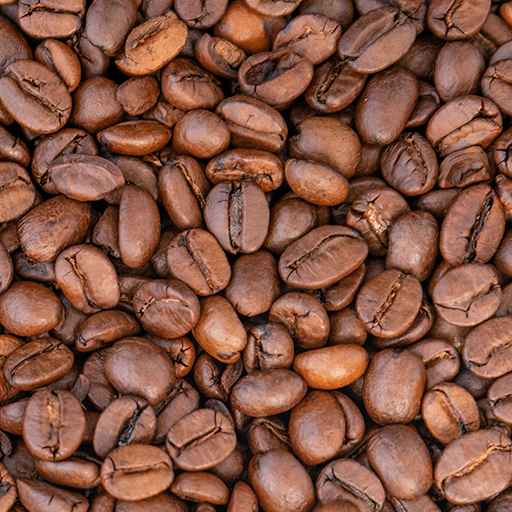
CAFFEINE
As a natural stimulant, caffeine blocks adenosine to improve focus, energy, and cognitive function, making it one of the most popular performance enhancers worldwide. It’s also shown to boost physical endurance and power, while reducing perceived exertion, allowing for more sustained effort during demanding tasks.
CAFFEINE
The most widely used nootropic, caffeine is consumed daily by approximately 89% of adults in the US [3]. Found naturally in coffee, tea, cacao, and more [2]. As a central nervous system stimulant, the common reasons for consuming caffeine include heightened focus, energy, sports performance, and overall cognitive function. It’s even added to some medicines for further pain relief [9].
Consumption of caffeine is common to combat the effects of sleep loss due to its ability to increase energy and reduce the feelings of fatigue [6]. In sleep deprived individuals, caffeine consumption has been found to improve attention, cognitive function, and speed & accuracy in information processing tasks [6].
The rate of adults who are overweight (25-29.9 BMI) or obese (30+ BMI) has been increasing significantly in the US. Between 1960-1962, it was only 44.9% of adults aged 20-74, but from 2017-2018 it was reported at 73.1% [14]! A meta-analysis over 94 studies found caffeine consumption increased fat utilization [10] though may have more of an effect on untrained individuals rather than in trained [11]. Total energy expenditure increases with caffeine supplementation, likely due to the thermogenic properties of caffeine [12, 13, 16]. It may also help suppress appetite [15]. Caffeine shouldn’t be considered a magic weight loss supplement though, because individuals need to control for total energy expenditure and energy consumption.
For those who are sensitive to caffeine or often feel jitters or anxiety, combining with L-Theanine can help remove negative side-effects [24, 25]. L-Theanine & caffeine taken together has shown improved cognitive performance than either taken alone [23, 24]. Learn more about L-Theanine. ANOO Focus includes both at the most researched 1:2 ratio.
How?
Caffeine prevents adenosine from binding to your receptors, avoiding a feeling of sleepiness [21]. Tip: waiting about 90 minutes upon waking before consuming caffeine may help prevent an afternoon crash in energy, but everyone is different so you should experiment to see what works best for you. Adenosine release also decreases dopamine levels, so caffeine helps continue dopamine production and improves mood & motivation towards your current task [22].
Dosage
Caffeine is generally considered safe for most people up to 400 mg per day in healthy adults, but recommended to consume no more than 200 mg in a single dose [20]. Different people have different sensitivities, so if you’re not used to caffeine it is recommended to start with smaller dosages.
Research on caffeine for improving physical performance is typically at higher dosages of 3-6 mg/kg of bodyweight [19], but it’s important to understand that higher dosages can increase the risk of negative side-effects.
Caffeine takes ~30-60 minutes after ingestion to be fully absorbed [1]. Consumed less than 9 hours before bed can significantly reduce sleep duration & quality. This is due to the elimination half-life of caffeine being ~5 hours on average, but can vary between 1.5 to 9.5 hours depending on the individual [1].
Benefits
- Physical endurance [2, 19]
- Exercise performance [18, 19]
- Reduction of fatigue [2]
- Enhancing mental alertness and attention [2, 4, 5, 7, 8]
- Weight loss [2, 10, 11, 12, 13, 15, 16]
- Reduction in perceived exertion [5, 17, 18]
- Improvement in mood [4]
- Increased energy [4]
- Faster reaction times [6, 8]
- Improved memory [6, 7]
- Improved problem solving and reasoning [8]
- Pain relief [9]
References:
[1] https://www.ncbi.nlm.nih.gov/books/NBK223808/
[2] https://pubmed.ncbi.nlm.nih.gov/20492310/
[3] https://pubmed.ncbi.nlm.nih.gov/25832334/
[4] https://pubmed.ncbi.nlm.nih.gov/33800853/
[5] https://pubmed.ncbi.nlm.nih.gov/30102874/
[6] https://pubmed.ncbi.nlm.nih.gov/31837359/
[7] https://pubmed.ncbi.nlm.nih.gov/20464765/
[8] https://pubmed.ncbi.nlm.nih.gov/28969341/
[9] https://pubmed.ncbi.nlm.nih.gov/25502052/
[10] https://pubmed.ncbi.nlm.nih.gov/36495873/
[11] https://pubmed.ncbi.nlm.nih.gov/33255240/
[12] https://pubmed.ncbi.nlm.nih.gov/21366839/
[13] https://pubmed.ncbi.nlm.nih.gov/27824614/
[14] https://www.cdc.gov/nchs/data/hestat/obesity-adult-17-18/obesity-adult.htm
[15] https://pubmed.ncbi.nlm.nih.gov/28446037/
[16] https://pubmed.ncbi.nlm.nih.gov/30335479/
[17] https://pubmed.ncbi.nlm.nih.gov/28872376/
[18] https://pubmed.ncbi.nlm.nih.gov/15773860/
[19] https://pubmed.ncbi.nlm.nih.gov/30926628/
[20] https://pubmed.ncbi.nlm.nih.gov/28438661/
[21] https://pubmed.ncbi.nlm.nih.gov/32424811/
[22] https://pubmed.ncbi.nlm.nih.gov/34150383/
[23] https://pubmed.ncbi.nlm.nih.gov/18681988/
[24] https://pubmed.ncbi.nlm.nih.gov/18006208/
[25] https://pubmed.ncbi.nlm.nih.gov/23107346/
